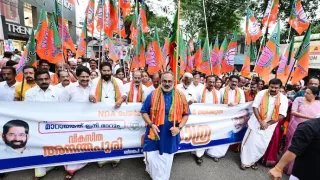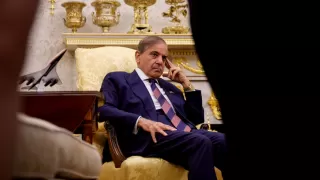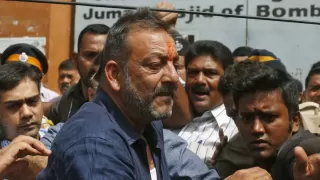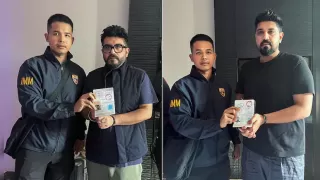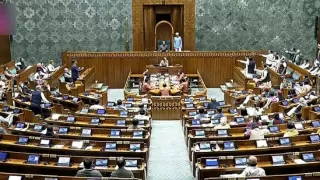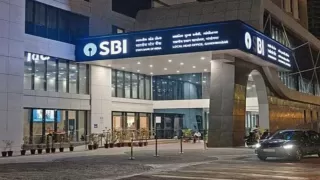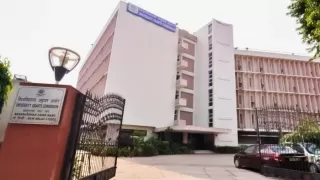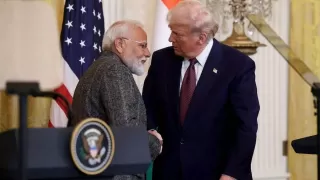Gangster Anmol Bishnoi, long wanted in a string of high-profile criminal cases, was deported to India and promptly arrested by the National Investigation Agency (NIA), marking a dramatic turn in a probe that has spanned multiple states and international borders. The development has intensified scrutiny on organised crime networks accused of orchestrating targeted killings, extortion and cross-border coordination. Central agencies say the arrest is a significant step in dismantling the alleged syndicate that has been linked to several violent incidents in recent years.
The deportation and arrest follow the rejection of an asylum plea in the United States, where Bishnoi had reportedly sought shelter after leaving India in 2022. Officials describe the move as the result of coordinated diplomatic and law-enforcement work, culminating in his return on a chartered flight. On arrival, the NIA took custody of Bishnoi amid tight security and renewed the focus on a complex case file that lists numerous charges and pending warrants across India.
Authorities say Bishnoi is the principal accused in the murder of NCP leader Baba Siddique and is also wanted in other major cases, including allegations connected to the killing of Punjabi singer Sidhu Moosewala and various incidents of extortion and violent crime. The arrest deepens the ongoing investigations into how transnational networks allegedly enable and finance criminal operations from abroad, and it raises fresh questions about the reach and resilience of organised crime syndicates.
Deportation and Arrest: How It Unfolded
According to officials, Bishnoi’s presence in the United States became untenable after a court rejected his asylum application, triggering immigration procedures that led to his deportation. He was flown back to India alongside two other suspects wanted in Punjab, following coordination between Indian agencies and US authorities. The arrival was met by NIA teams who detained him on multiple warrants and charges.
The NIA’s immediate arrest underscores the priority the agency assigns to cases involving alleged terror-gang nexus activities and politically sensitive murders. Investigators say the detention will permit faster access to evidence, suspects and financial trails that may reveal how the alleged syndicate operated from overseas to direct activities on Indian soil.
Law-enforcement sources point to a rapid processing of legal formalities once the asylum plea was denied, which allowed Indian agencies to act without delay. The chartered deportation and subsequent NIA arrest reflect a concentrated effort to neutralise what central investigators characterise as an organised criminal enterprise with international tentacles.
Accusations Against Anmol Bishnoi
Bishnoi has been accused of playing a key role in several violent incidents. Among the most prominent allegations is that he was the main plotter behind the murder of NCP leader Baba Siddique. Police and investigative agencies maintain that evidence collected over months linked him to the planning and logistical support for the attack, prompting his inclusion on multiple charge sheets and a bounty issued in connection with the case.
Beyond the Siddique case, authorities have flagged Bishnoi’s alleged involvement in other grave crimes, including the murder of singer Sidhu Moosewala and an attack outside a high-profile celebrity residence. The range of accusations points to a pattern of organised violence and a network that allegedly used both local operatives and overseas support to execute plans and manage criminal enterprises.
Investigators have also described Bishnoi as a key figure in running extortion rackets from abroad, using intermediaries and on-ground shooters to collect money and enforce control. These claims form part of a wider probe into the financing and logistics of the accused gang’s activities across several states.
Evidence, Charge Sheets and Ongoing Inquiries
The NIA had previously filed chargesheets naming Bishnoi in multiple cases after lengthy probes. Those filings documented alleged links between him, designated individuals and other accused members of the gang. Officials say the charge sheets include telephone records, financial transactions and witness statements that form the backbone of the prosecution’s case.
Forensic and digital evidence recovered during raids and searches has been crucial to building the allegations against the accused. Investigators continue to analyse data from seized devices and financial records to map the network’s structures, funding sources and command chain. As the case progresses in court, authorities expect further investigative steps, including detailed interrogations of the arrested accused to uncover additional leads.
While much of the evidence remains part of sealed investigative records, the authorities have signalled their intent to follow the trail of both domestic operatives and overseas facilitators to disrupt any remaining operational capability of the alleged syndicate.
Alleged Transnational Links and the Asylum Rejection
One striking aspect of this case is the accused’s attempt to remain beyond Indian jurisdiction by relocating abroad and filing for asylum. The US court’s rejection of Bishnoi’s asylum plea cleared the path for deportation, an outcome that underlines the limits of legal protections where authorities deem there is credible suspicion of criminal conduct. The rejection also suggests that the documentation and claims presented in support of asylum were insufficient to overturn immigration concerns.
The deportation raises questions about how accused individuals exploit international systems to evade arrest, and it highlights the role of international cooperation in countering such moves. Diplomatic coordination and shared intelligence between nations were central, according to law-enforcement sources, to ensuring deportation and a secure transfer to Indian custody.
Authorities have said that once returned to India, Bishnoi would face the full gamut of charges filed against him, with investigators keen to interrogate him about his contacts, the logistics of alleged crimes, and any overseas connections that may have facilitated illicit activities on Indian soil.
Impact on Ongoing Cases and the Criminal Ecosystem
The arrest of a suspect alleged to be a principal plotter is likely to have multiple effects on the broader investigation. For prosecutors, it may enable clearer reconstruction of events, identification of facilitators, and recovery of financial trails. For law enforcement, it represents an opportunity to pursue arrested and absconding associates, search for hidden assets, and disrupt extortion channels.
At the same time, courts will consider the admissibility of evidence collected and ensure procedural safeguards during interrogation and prosecution. Legal teams for the accused may challenge aspects of detention and extradition, making the judicial phase an important battleground for determining how quickly the cases proceed to trial.
Beyond legal dynamics, the arrest may have symbolic significance in signalling a crackdown on organised crime groups that allegedly operate across states and borders. For victims’ families and affected communities, it may offer a measure of closure or at least a perception that justice is being actively pursued.
What Comes Next: Prosecution and Further Investigations
With Bishnoi now in custody, the NIA will likely prioritise custodial interrogation to elicit information about co-conspirators, funding sources and the operational chain of command. Investigators will also coordinate with state police units where parallel cases are pending to consolidate evidence and determine the sequence of prosecutions.
Prosecutors are expected to lodge formal charges where required and seek remand to continue interrogations. Given the multiplicity of cases and the cross-state nature of alleged crimes, the NIA may file additional charge sheets or supplementary documents as new evidence emerges from questioning and forensic analysis.
The unfolding legal process will test the investigative theory about how the alleged network functioned, and whether key figures abroad played an active managerial role or served mainly as financiers and coordinators for ground operatives.
Legal, Political and Social Repercussions
High-profile arrests of alleged gang leaders tend to reverberate beyond courtrooms. Politically, such developments often prompt demands for tougher measures against organised crime and calls for improved cross-border law enforcement cooperation. Socially, they draw attention to the vulnerabilities that enable criminal syndicates—ranging from forged documents to illicit financial flows and local recruitment pressures.
Lawmakers and policy experts may renew debates on immigration safeguards, international criminal law cooperation, and the resources needed for sustained investigations into organised crime. At the same time, civil-society voices will emphasise the need for due process and respect for legal rights even as authorities pursue aggressive action against alleged wrongdoers.
In the weeks ahead, the focus will be on the court process, the NIA’s interrogation outcomes, and whether further arrests will follow as a result of information gained from the detained accused.
Conclusion: A Key Development in a Long-Running Probe
The deportation and arrest of Anmol Bishnoi marks a pivotal moment in a long-running investigation that spans multiple high-profile crimes. While the NIA’s action is being hailed by some as a breakthrough, the path to convictions will involve detailed evidence presentation, witness testimony and legal scrutiny. The coming weeks are likely to be decisive in revealing the depth of the alleged network and in determining how broadly the investigation will extend across state and international lines.
As the case progresses through the courts, investigators will aim to turn arrests into robust prosecutions that dismantle the alleged criminal infrastructure and hold accountable those accused of orchestrating violent crimes from within and beyond India’s borders.
Also Read: Nitish Kumar’s Big Bihar Twist: Shock Exit, Comeback Rumors




